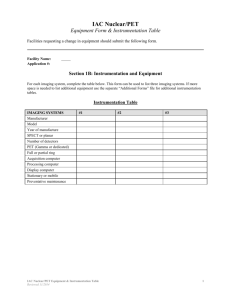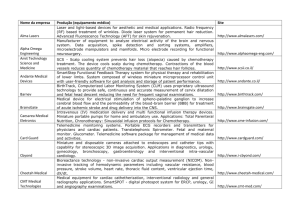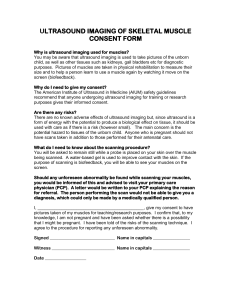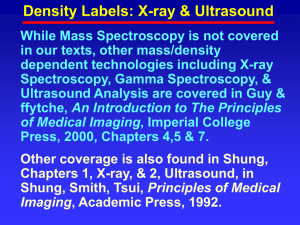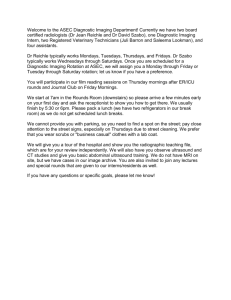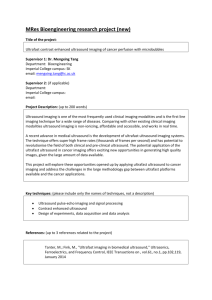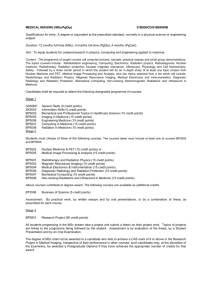ECE 503
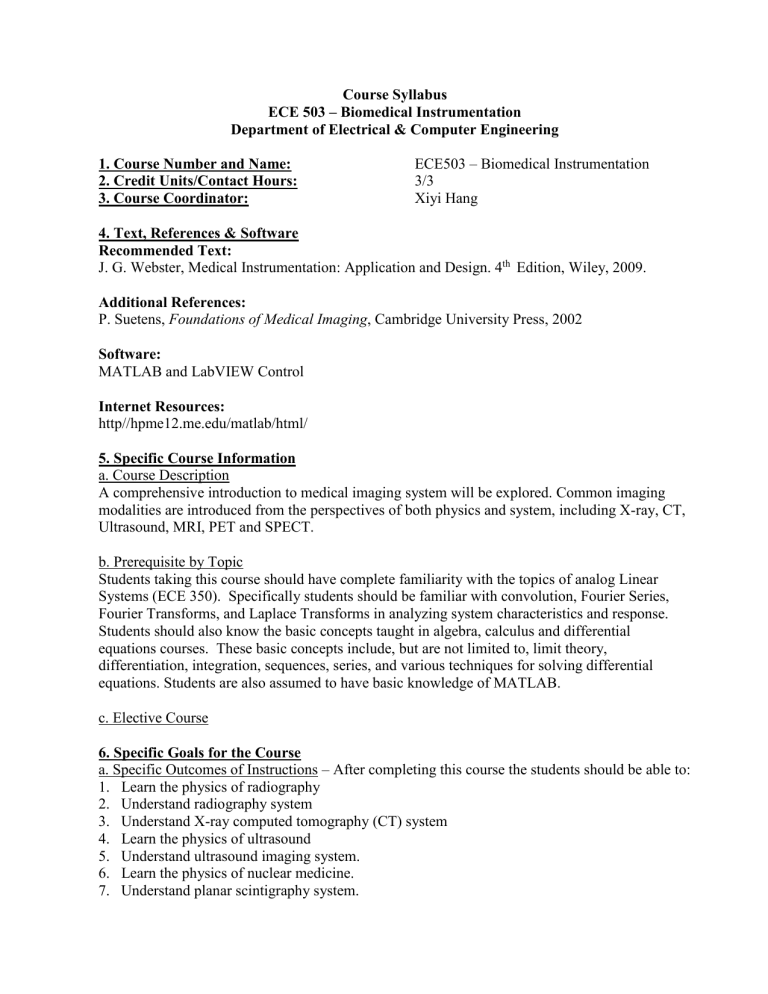
Course Syllabus
ECE 503 – Biomedical Instrumentation
Department of Electrical & Computer Engineering
1. Course Number and Name:
2. Credit Units/Contact Hours:
3. Course Coordinator:
ECE503 – Biomedical Instrumentation
3/3
Xiyi Hang
4. Text, References & Software
Recommended Text:
J. G. Webster, Medical Instrumentation: Application and Design. 4 th
Edition, Wiley, 2009.
Additional References:
P. Suetens, Foundations of Medical Imaging , Cambridge University Press, 2002
Software:
MATLAB and LabVIEW Control
Internet Resources: http//hpme12.me.edu/matlab/html/
5. Specific Course Information a. Course Description
A comprehensive introduction to medical imaging system will be explored. Common imaging modalities are introduced from the perspectives of both physics and system, including X-ray, CT,
Ultrasound, MRI, PET and SPECT. b. Prerequisite by Topic
Students taking this course should have complete familiarity with the topics of analog Linear
Systems (ECE 350). Specifically students should be familiar with convolution, Fourier Series,
Fourier Transforms, and Laplace Transforms in analyzing system characteristics and response.
Students should also know the basic concepts taught in algebra, calculus and differential equations courses. These basic concepts include, but are not limited to, limit theory, differentiation, integration, sequences, series, and various techniques for solving differential equations. Students are also assumed to have basic knowledge of MATLAB. c. Elective Course
6. Specific Goals for the Course a. Specific Outcomes of Instructions – After completing this course the students should be able to:
1. Learn the physics of radiography
2. Understand radiography system
3. Understand X-ray computed tomography (CT) system
4. Learn the physics of ultrasound
5. Understand ultrasound imaging system.
6. Learn the physics of nuclear medicine.
7. Understand planar scintigraphy system.
8. Understand emission computed tomography system, including PET and SPECT.
9. Learn the physics of magnetic resonance.
10. Understand magnetic resonance imaging system
11. Design image reconstruction algorithms
12. Use MATLAB to do medical image analysis b. Relationship to Student Outcomes
This supports the achievement of the following student outcomes: a) An ability to apply knowledge of math, science, and engineering to the analysis of electrical engineering problems. b) An ability to design and conduct scientific and engineering experiments, as well as to analyze and interpret data. e) An ability to identify, formulate, and solve electrical engineering problems. f) An understanding of ethical and professional responsibility. g) Ability to communicate effectively through written reports and oral presentations. i) A recognition of the need for and an ability to engage in life-long learning. k) An ability to use modern engineering techniques for analysis and design. m) An ability to analyze and design complex devices and/or systems containing hardware and/or software components. n) Knowledge of math including differential equations, linear algebra, complex variables and discrete math.
7. Topics Covered/Course Outline
1. Introduction
2. Introduction to MATLAB
3. 2D signals and systems
4. Image quality
5. Physics of radiography
6. Radiography system
7. CT
8. Physics of Ultrasound
9. Ultrasound imaging system
10. Physics of magnetic resonance
11. MRI system
12. Physics of nuclear medicine
13. SPET and PET system
14. Introduction to medical image analysis
Prepared by:
Xiyi Hang, Professor of Electrical and Computer Engineering, November,2011
Ali Amini, Professor of Electrical and Computer Engineering, March 2013
